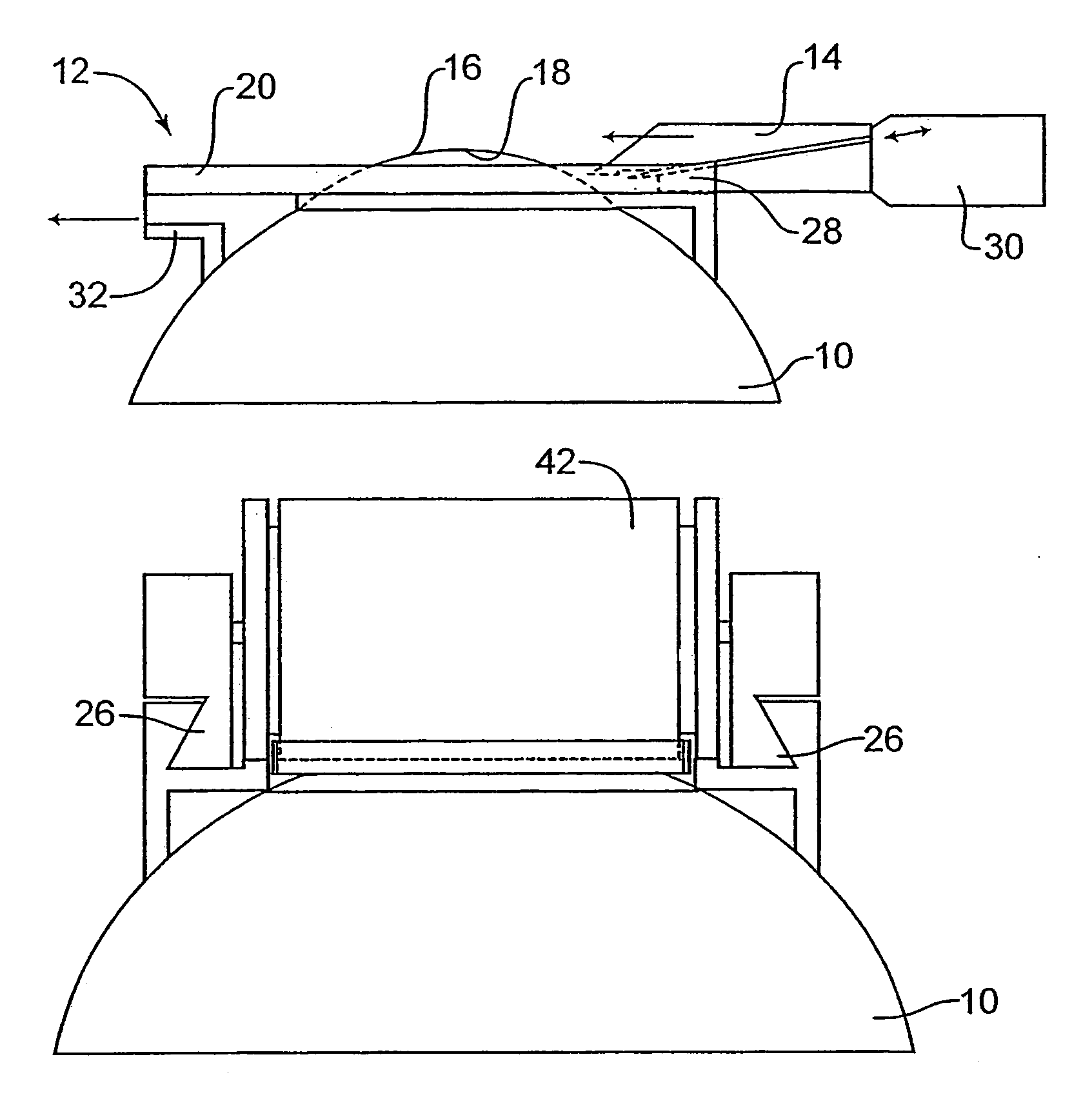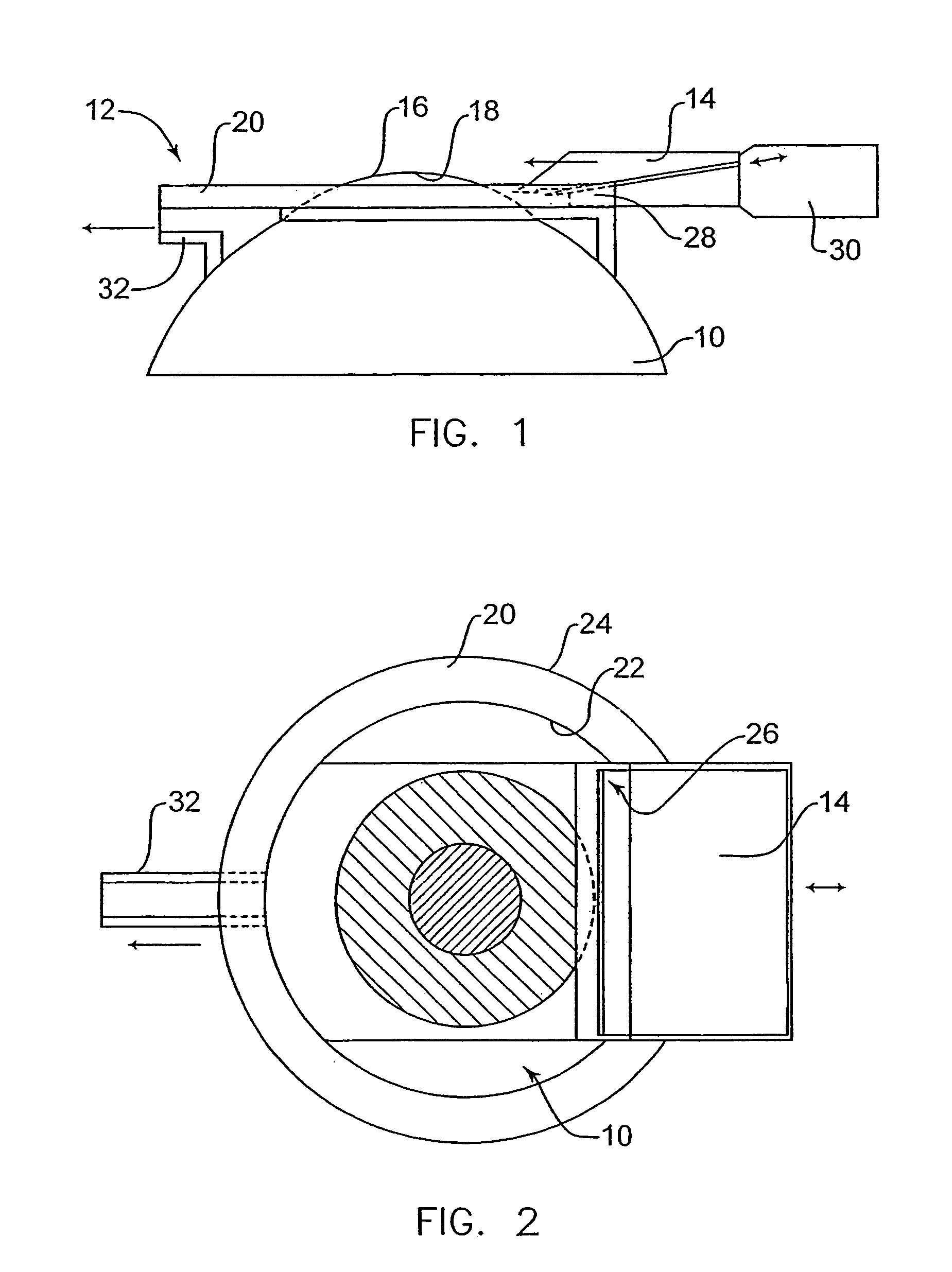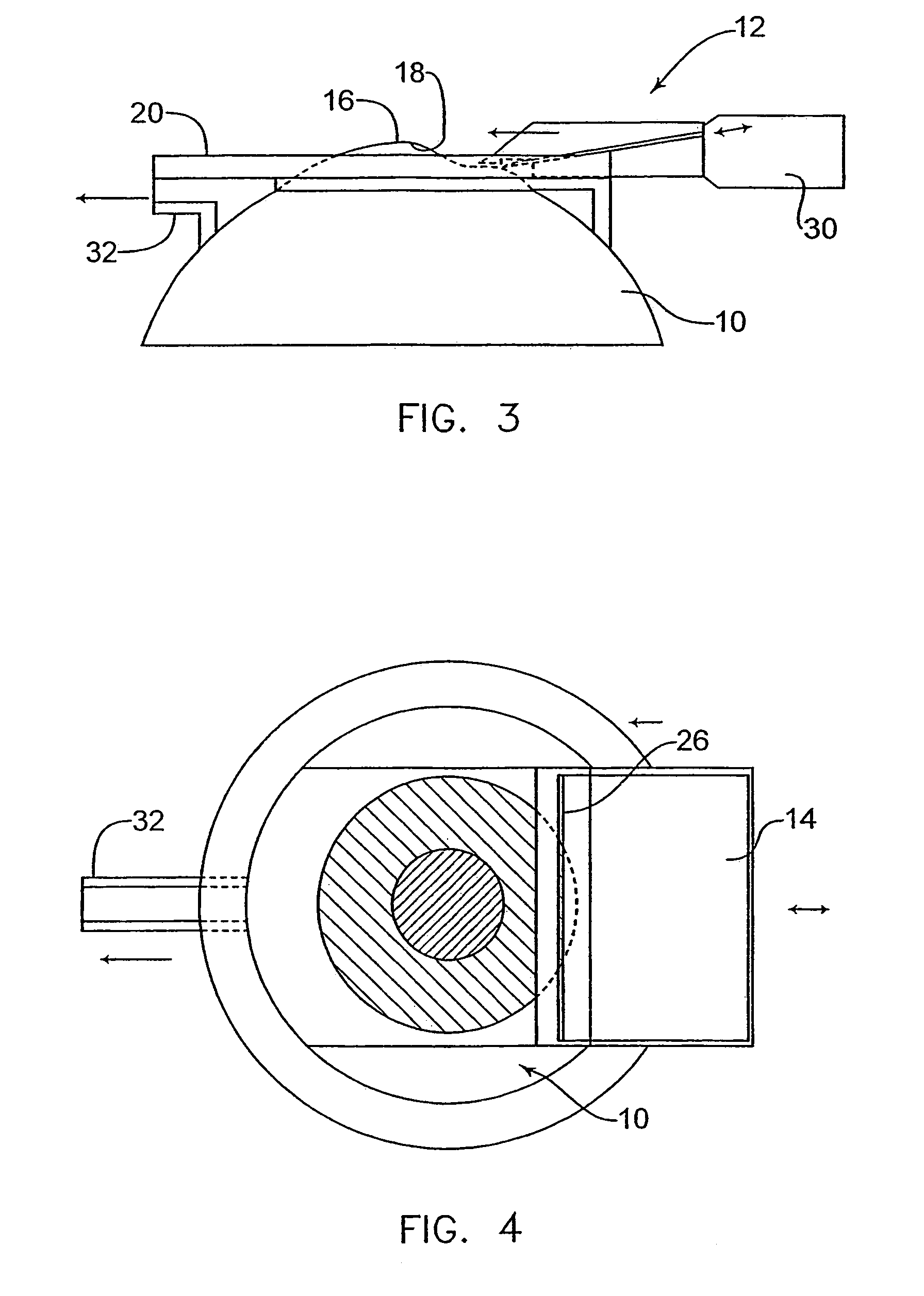Device for separating the epithelium layer from the surface of the cornea of an eye
a technology of epithelium layer and cornea, which is applied in the field of laserassisted in situ keratomileus, can solve the problems of permanent degradation of visual performance, poor quality of procedure and healing time, and use of microkeratomes, so as to reduce postoperative pain and reduce visual rehabilitation period
- Summary
- Abstract
- Description
- Claims
- Application Information
AI Technical Summary
Benefits of technology
Problems solved by technology
Method used
Image
Examples
Embodiment Construction
[0038]To help correct an imperfect vision of a patient's eye, an automated mechanical device separates the epithelial layer from the cornea of a patient's eye from the cornea. A separator, such as a plate, wire or dull blade is used to separate the epithelial layer of the cornea from the basal membrane. In this way, the automated mechanical device can preserve the separated epithelial layer as a disk without rupturing the disk and without substantial epithelial cell loss, less than 5–10% loss, to ensure viability and stability of the epithelial disk after replacement on the surface of the cornea. After the epithelial layer is separated from the cornea, a laser is used to help correct imperfections in the cornea. Thereafter, the epithelial layer is placed back on the cornea to aid in the healing process of the eye.
[0039]FIG. 1 is a diagram showing a side view of an eye 10 of a patient and a epithelial separator device 12. The epithelial separator device 12 includes a separator 14, sh...
PUM
 Login to View More
Login to View More Abstract
Description
Claims
Application Information
 Login to View More
Login to View More - R&D
- Intellectual Property
- Life Sciences
- Materials
- Tech Scout
- Unparalleled Data Quality
- Higher Quality Content
- 60% Fewer Hallucinations
Browse by: Latest US Patents, China's latest patents, Technical Efficacy Thesaurus, Application Domain, Technology Topic, Popular Technical Reports.
© 2025 PatSnap. All rights reserved.Legal|Privacy policy|Modern Slavery Act Transparency Statement|Sitemap|About US| Contact US: help@patsnap.com



